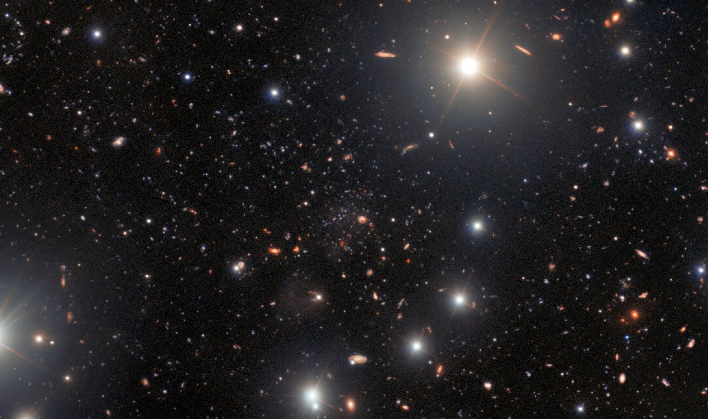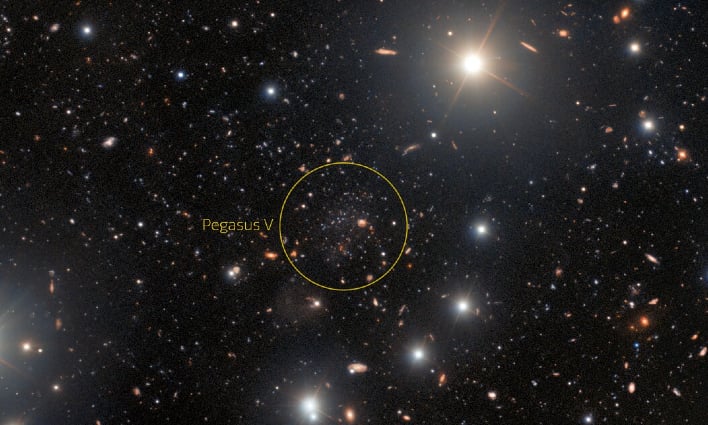A Mysterious Fossil Galaxy Has Been Discovered Near Andromeda

Donatiello happened upon an interesting "smudge" while perusing data in a DESI Legacy Imaging Surveys image. The amateur astronomer was taking part in a systematic search for Andromeda dwarfs coordinated by David Martinez-Delgado from the Instituto de Astrofisica de Andalucia, Spain. The image in which the "smudge" was identified, was taken using the US Department of Energy-Fabricated Dark Energy Camera on the Victor M. Blanco 4-meter Telescope at Cerro Tololo Inter-American Observatory (CTIO).
Deeper follow-up observations by other astronomers using the larger Gemini North Telescope with the GMOS instrument unveiled faint stars in Pegasus V, confirming that it is in fact an ultra-faint dwarf galaxy on the outskirts of the Andromeda Galaxy. The follow-up observations indicated that the galaxy appears to be strikingly deficient in heavier elements in comparison to similar dwarf galaxies. This more than likely means it is very old and is expected to be a fossil of the first galaxies in the Universe, according to NOIRLab.
"We have found an extremely faint galaxy whose stars formed very early in the history of the Universe," remarked Michelle Collins, an astronomer at the University of Surrey, UK and lead author of the paper announcing the discovery. "This discovery marks the first time a galaxy this faint has been found around the Andromeda Galaxy (see image below) using an astronomical survey that wasn't specifically designed for the task."
The discovery of faint galaxies is an important, yet very difficult, undertaking. Astronomers believe that the Universe is packed with faint galaxies like Pegasus V, but there have been relatively few detected in relation to how many their theories predict exist. If there truly are fewer faint fossil galaxies than predicted, this would suggest a severe problem with astronomers' understanding of cosmology and dark matter.
"The trouble with these extremely faint galaxies is that they have very few of the bright stars which we typically use to identify them and measure their distances," Emily Charles, a PhD student at the University of Surrey who was involved in the study explained. "Gemini's 8.1-meter mirror allowed us to find faint, old stars which enabled us both to measure the distance to Pegasus V and to determine that its stellar population is extremely old."
Pegasus V is thought to be a fossil of the first galaxies due to the strong concentration of old stars the team found. Collins hopes that further study of Pegasus V's chemical properties will provide give them with clues into the earliest periods of star formation in the Universe. "This little fossil galaxy from the early Universe may help us understand how galaxies form, and whether our understanding of dark matter is correct."



